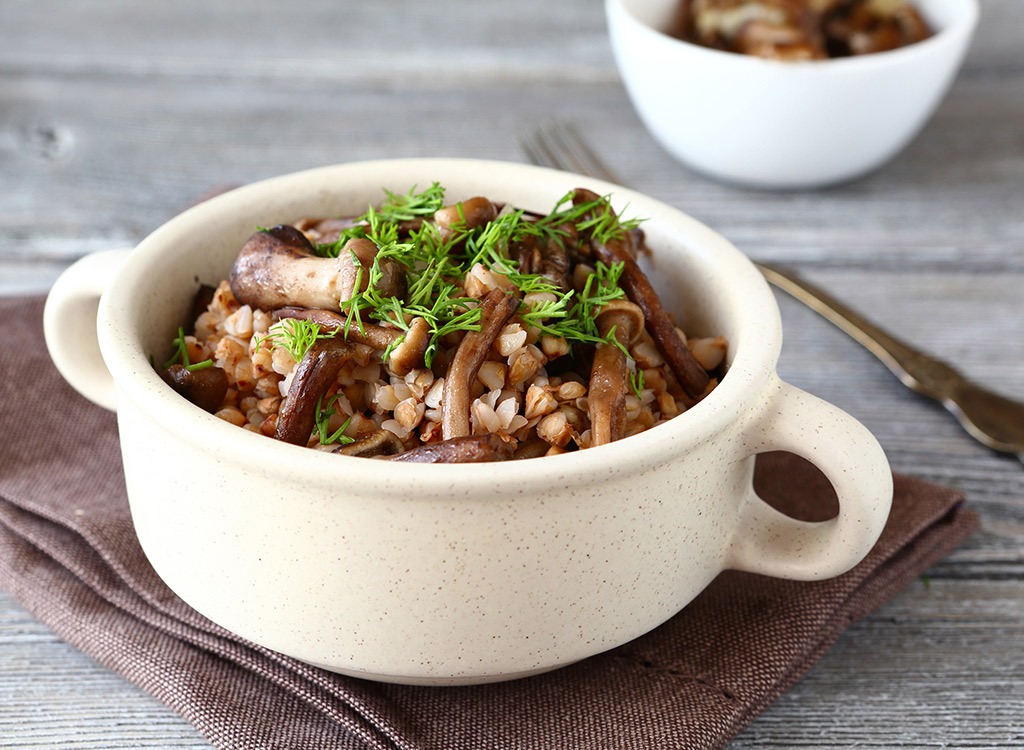Why You Need to Get to Know Pseudograins Now

“What’s for dinner tonight, honey?” my friend asked her boyfriend.
“Grilled chicken, sautéed broccoli and quinoa,” he called from the kitchen.
“Oh my gosh, ever since he started trying to lose weight, he won’t stop making quinoa,” she whispered to me as she rolled her eyes. “We’ve been eating it everyday and I’m starting to go crazy! There has got to be something else out there that’s nutritionally similar I can get him to eat.”
My friend’s hunch was spot on. Dieters often turn to staples like quinoa because they know they’re healthy picks, but eating the same thing day after day can be duller than dull. Luckily there are other pseudograins—gluten-free seeds and grasses that are prepared and eaten like grains—similar to quinoa that can add some variety to your dinner plate. These superfoods are typically high in protein and fiber, offer an array of amino acids and have a low-glycemic index so they don’t spike blood sugar levels like simple carbs such as white rice. Here are four you should definitely get to know.
Kañiwa
Nope, we didn’t just spell quinoa wrong. Kañiwa (pronounced ka-nyi-wa) is entirely different grain altogether that just so happens to have a similar name. This tiny gluten-free seed is about half the size of quinoa and has a nutty, slightly sweet flavor that pairs well with tofu, meats and seafood. It can also be added to salads, stir-fries and soups or combined with fruit and chopped nuts and eaten like oatmeal. If you can get your hands on a box, its nutritional profile–which boasts healthy doses of protein, fiber, iron and calcium–makes it well worth the effort. Some Whole Food locations carry the grain, but it’s hit or miss. Since it can be a bit hard to find, we suggest buying it online so you don’t have to run all over town to track it down.
Buckwheat
Like quinoa, buckwheat is a complete protein, meaning it contains all eight essential amino acids needed to prevent the breakdown of muscles. Packing six grams of protein and a host of vitamins and flavonoids in every one cup serving, this seed is a true nutritional powerhouse. Adding some buckwheat-based Japanese soba noodles to stir-fries with some toasted sesame seeds is a great way to introduce it to your diet. Buckwheat groats (the hulled seeds of the plant) can be used to make a hot breakfast porridge or replace any other grains you’re already cooking with in everything from side dishes to casseroles.
Amaranth
This gluten-free pseudograin is a distant cousin to beets that were originally cultivated by the Aztecs. With a mere 125 calories per half cup and a whopping 5 grams of protein and 3 grams of fiber, amaranth is a smart addition to your diet. Studies have shown that eating it can also help lower LDL “bad” cholesterol levels. If for no other reason, cook up some ameranth for the fun-factor. When put in a hot skillet, the seeds pop up like popcorn! Although the end result won’t be anywhere as big or fluffy, they do have a faint peppery-corn taste that makes for a great side dish.
Teff
This tiny, gluten-free grass has a mild, nutty flavor and packs 10 grams of protein per cup. It’s also a good source of fiber, essential amino acids, calcium, iron and vitamin C, a nutrient that isn’t typically found in grains. Cook teff as a simple side dish with some Parmesan, onions, fresh garlic and tomatoes, whip up a teff burger or use it as a base for breakfast porridge. Add honey, fruit, and unsweetened coconut flakes for some additional flavor and crunch; you might just discover your new early morning favorite.









